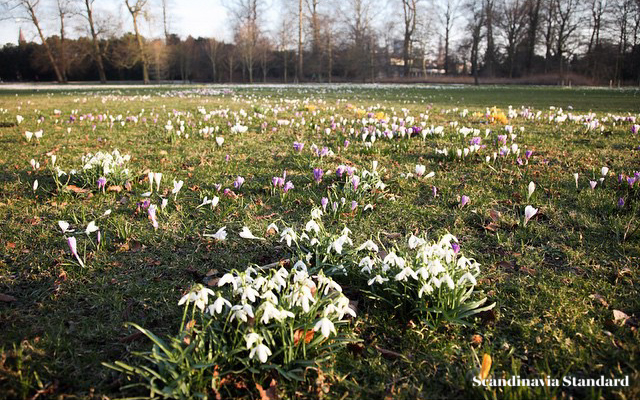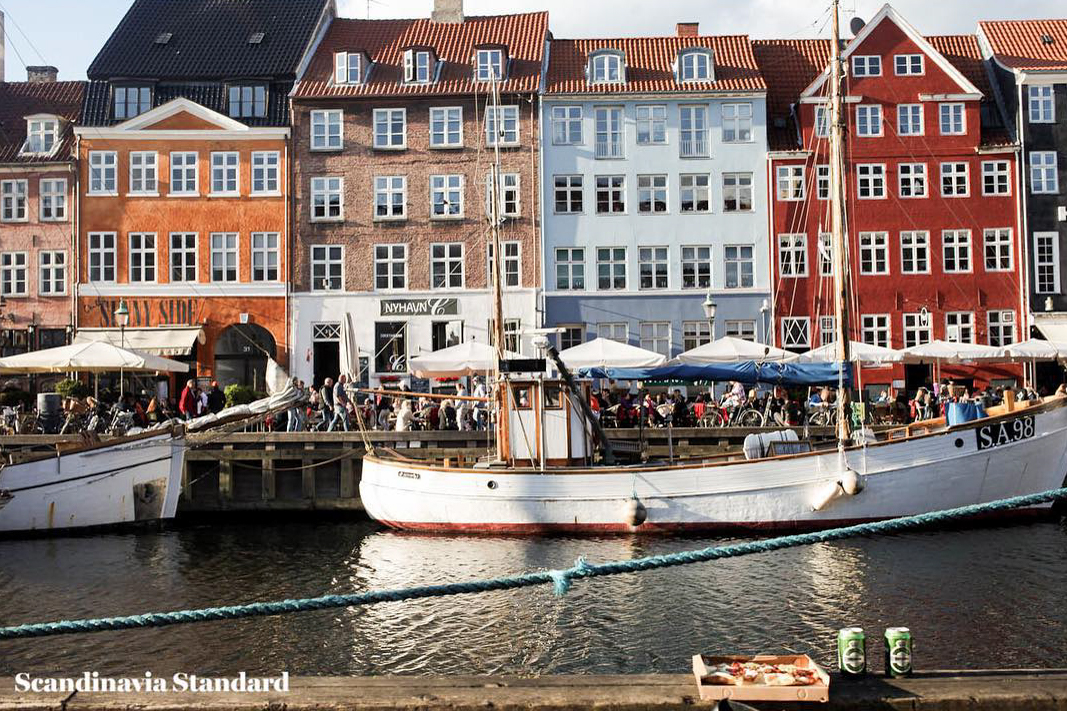Oh boy. Weather in Denmark. We are getting into political territory. There’s nothing Danes like to talk about more than the weather. It’s a national pastime and who could blame them? The weather here has more twists and turns than a Raymond Chandler novel (or, Fast & Furious: Tokyo Drift. Pick your reference). One of the things you’ll hear most often in Denmark is “there’s no such thing as bad weather, only bad clothes,” which is a dirty lie obviously. It’s a fair point though: in Denmark, you need to be sartorially prepared.
|
|
If you need weather information to plan a travel wardrobe in Copenhagen, figure out when to invite guests or just want to have something to talk about at a dinner party (when did dinner parties get so dull, guys?), this list will help you out. To check out this week’s weather in Copenhagen, head to Yr.no.

Trying to figure out the best month to visit Denmark? Here’s our month-by-month breakdown of the weather in Denmark:
 January in Copenhagen
January in Copenhagen
I’m so sad that I had to start on January, because now I’m in a bad mood. January is cold and dark, with occasional snow and rain; snow does not stay on the ground long, though. Temperatures usually hover somewhere between -1 and 4 degree mark but can plunge far below freezing at night.
You will need all the cold-weather gear for this month, especially if you plan to cycle (which 75% of cyclists in Copenhagen do!). The wind can be very icy, so wind-proof clothes are recommended.

 February in Copenhagen
February in Copenhagen
THE WORST. February is The Worst. You’ve endured January and then February comes along and fucks everything up by giving you no hope. Same weather as January, but you’ll also feel irrationally mad at the wind.

You know that old Simpsons joke about Grandpa shaking his fist at a cloud? That is me, all February.

 March in Copenhagen
March in Copenhagen
March will be a few degrees warmer than January and February (typically 1 – 7 degrees), but you’ll barely be able to tell because of the continued wind onslaught.
The real benefit to March is that the sun actually shows itself and stays out later. Little flowers do start to show their faces, so sometimes it’s optimism-inducing to look down at the ground rather than up at the sky. Unless it’s a particularly warm year, you’ll still need most of your winter and rain gear.

 April in Copenhagen
April in Copenhagen
What can one even say about April in Denmark? It’s a crapshoot. I don’t allow myself to be surprised by any form of weather that occurs during this month. Warm and sunny? April! Windy and overcast? April. Hail and frigid temperatures? APRIL.
This is when the cherry blossoms come out, though, so a lot can be forgiven when you’re walking amongst clouds of pastel pink. Be prepared for anything and any temperature range, from 4 – 12 degrees. Whatever, April.

Read more |
 May in Copenhagen
May in Copenhagen
Now, here’s a month I can get behind. Although the first week or so of May can simply be rainy, cold residuals from April, the rest of the month is usually the warm-up to summer. The temperature is typically between 8 and 17 degrees, which isn’t too shabby, and the sun will finally come out to play for real. This is the month with the fewest average rainfall days (12). A spring jacket/rain coat should keep you sorted.
 |  |
 June in Copenhagen
June in Copenhagen
June is usually pleasant, but there can be some temperature backsliding from May. Lots of sunshine, a few really fabulous days and a few chilly/rainy days where you find yourself muttering “I can’t believe this is June.” The average temperature range is 8 – 20; when you finally get those 20 degree days you will see ALL the Danes outside. Lots of people say that June the best month to visit Denmark.

 July in Copenhagen
July in Copenhagen
Glorious. Occasional rain showers but for the most part, sunny and warm. Denmark never really gets hot. I know some Danes will disagree with me and to them I say: you’re wrong, you just don’t know what hot feels like. The average high is 23 degrees and the average low is 13, so you have a nice range to work with. The sun will be out until 11:30; make sure you have a pair of sunglasses.

 August in Copenhagen
August in Copenhagen
Another great month. The temperature range narrows a bit, at 14 – 22 degrees. This is also the month with the highest average volume of precipitation (48.4mm), meaning when it rains, it really rains. The sun will be out in full force, going down late and rising very early.

 September in Copenhagen
September in Copenhagen
Perhaps surprisingly, September tends to be a lovely, crisp month. The temperatures are dropping (with a range of 10 – 17) and there will be a bite to the air, but it’s nothing too dreadful. Other than slightly increased rainfall and decreased sunshine, this month is fairly similar to May. It’s the impending sense of winter doom that makes it feel so different.
 October in Copenhagen
October in Copenhagen
Noooo. By October the weather in Denmark has started to turn and you’ll get some winter-level cold days. The temperature tends to stay within 6 – 12 degrees, so you’ll be sure to get a few icy but sunny days, and a couple of genuinely warm ones will sneak up and surprise you. Though the transition from summer to winter can feel like a snap in Denmark, October is a fairly transitional month – one could even call it “autumn.” But blink and you’ll miss it.
 |  |
 November in Copenhagen
November in Copenhagen
November in Copenhagen tends to be cold and crisp, but temperatures tend to stay above freezing, and about 3 – 8 degrees Celsius. There’ll probably be some showers. November is essentially a winter month with occasional reprieve. If the wind is gentle, it can feel very mild, if dark. Overall, expect to need your winter gear and rain gear.
November is a turning point of the year, as Denmark experiences a significant reduction in daylight hours. The days become shorter, and the nights longer, leading to reduction to natural light exposure, and unfortunately, a reduction in people’s mood and energy levels.

 December in Copenhagen
December in Copenhagen
Well, it’s cold and dark again but it’s also Christmas time! December never feels as terrible as January or February for this reason alone; savor the holiday, people. By the end of the year we’re back down to a range of 0 – 5 degrees. Time to light those candles and drink some gløgg!

Have more questions? Take a look at our FAQs about the weather in Copenhagen.
How many days of rain does Denmark have on a average year?
Denmark has a relatively high number of rainy days on average throughout the year. On average, Denmark experiences around 121 days of precipitation annually.
However, it’s important to note that the distribution of rainfall can vary across different regions of the country. Coastal areas may experience more precipitation than inland areas, and the western parts of Denmark generally receive more rainfall compared to the eastern parts.
Is Denmark colder than the UK?
Denmark tends to be slightly cooler than the UK. Copenhagen, Denmark, has a marine west coast climate with a continental subtype, experiencing more temperature variation and sunlight hours than the UK.
London, also with a marine west coast climate, is generally warmer than Copenhagen. Edinburgh, although warmer than Copenhagen, has more temperature variation and less sunlight.
Interestingly, both Edinburgh and Copenhagen are located at 55 degrees latitude. Denmark and Scotland, despite their geographical separation, share striking similarities in their weather patterns, fostering a climate that can be characterized as wet and cold on unfavorable days while offering milder conditions on better ones. But latitude alone doesn’t determine temperature differences; factors like continental subtype, precipitation, and sunlight exposure contribute to the variations in climate.
Copenhagen receives 68 mm (2.7 in) less precipitation annually than Edinburgh, with 219 more hours of sunlight per year. This difference in sunlight exposure is particularly significant, indicating a marked contrast in daylight hours.
This article has been updated, and was first published in April 2016.

